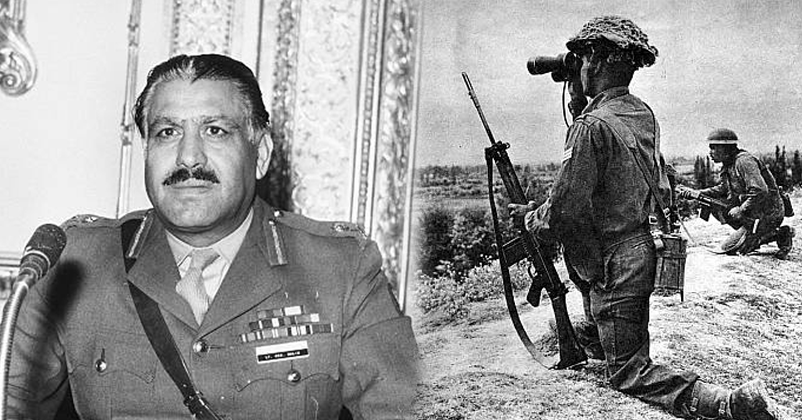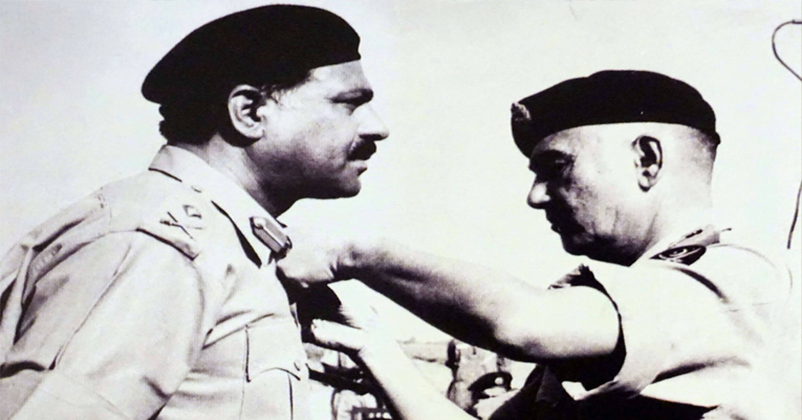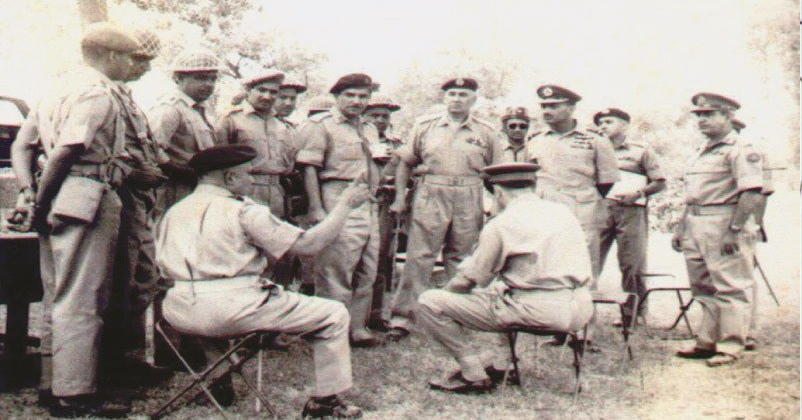Burning hatred for Ahmadiya General Akhtar Malik in Pakistan saved Akhnoor for India
| 01-Sep-2022 |

By Sant Kumar Sharma
It was in May 1965 that the Pakistani Army had drawn plans to attack Akhnoor bridge and this was codenamed Operation Grand Slam. It was to be the second and a very vital prong of Operation Gibraltar, that was launched by Pakistan to snatch Kashmir valley from India. Operation Grand Slam was launched in September 1965 when Operation Gibraltar was already floundering. Contrary to expectations of the Pakistani planners, ordinary Kashmiris did not help the Pakistani soldiers who had infiltrated Kashmir Valley from Haji Pir pass and another axis.
Pakistan President Ayub Khan believed that India had weakened considerably after losing the India-China war of 1962. Of course, India reviewed its defence preparedness after the loss and was trying systematically to strengthen its armed forces, be its Army, the Navy and the Indian Air Force (IAF). A severe resource crunch and insufficient food stocks with India were also reasons that Ayub thought provided opportunity to Pakistan to attack and take away Kashmir.
Basically, what Pakistan could not achieve in 1947-48 war over Jammu and Kashmir was sought to be accomplished in 1965. To take way whole of Kashmir, besides Akhnoor where the Chenab flows, were the twin objectives Pakistan had set up for itself.

President Ayub did not want to give India a chance to recover and attack it after it had grown in strength. Nehru’s death in May 1964 and his successor Lal Bahadur Shastri’s demeanour, were also thought of as weaknesses that needed to be exploited. Pakistani planners formed an opinion that diminutive Shastri would cover in fear when they attacked Indian positions.
Later events proved that all these assessments regarding Shastri were gross miscalculations.
Incidentally, Pakistan had also been armed by the US for over a decade, as part of the Cold War strategy, to thwart expansion of communist Russia. Superior armaments, particularly agile Patton tanks and fighter jets like Sabres, were also responsible for boosting the confidence of Pakistani military planners. In comparison to superior arms that Pakistan forces possessed, India had obsolete weaponry, slower tanks and inferior aircraft.
Besides, to deal with a possible attack from China, substantial Indian forces were deployed all along border with it. This also acted as an encouragement for Pakistan as it believed that China may join it in war against India at some opportune moment, making things easier for it to take Kashmir away. With all these factors arrayed against India, Pakistan launched its attacks on India in early August that year. By that time, skirmishes in several sectors had been going on for some months.
On September 1, 1965, General Akhtar Hussain Malik was in command of the Pakistani troops that were racing towards Akhnoor town as part of Operation Grand Slam. The element of surprise that the Pakistani Army had really made defence of Akhnoor a serious challenge. The Indian tanks in this sector were far inferior to Patton tanks used by the Indian Army. The attacking Pakistani troops had already taken over Chhamb town on the border and it remains in their control even now.
 Sialkot, 1965: President Ayub Khan with Yahya Khan (first from the right) reviewing war strategy
Sialkot, 1965: President Ayub Khan with Yahya Khan (first from the right) reviewing war strategy In fact, the situation was so precarious that India could save Akhnoor mainly because it launched a counter-attack on Lahore later! The attack on Lahore and Sialkot forced Pakistan to withdraw its forces which were advancing menacingly towards Akhnoor. This means the number of attacking forces had to be whittled down by Pakistan and its objective of capturing Akhnoor remained unfulfilled.
After making the initial lightening gains, the Pakistani troops could have pressed on and endangered Akhnoor. Losing that town would have been a huge psychological blow and President Ayub had rightly recognised it as India’s jugular in this sector. He was clear in his mind that capturing Akhnoor will be something India will not be able to recover from. That it will prove to be fatal blow.
Strange things, however, happened at the height of that Pakistani build-up and forward thrust into Indian territory, and in rather unexpected, illogical ways. Much to India’s relief and benefit, the onward march of the Pakistani attacking troops was delayed by their top military leadership. General Musa Khan, who headed the Pakistan Army at that time, decided to make a transfer at that critical moment.
With President Ayub, and many senior politicians and generals backing him, General Musa Khan ordered that General Akhtar Malik, who was in command of the advancing troops, be divested of the command. At a time when he was leading a winning army advancing towards its main objective Akhnoor, with next objective set as Jammu city.
In the midst of that advance, believe it or not, General Akhtar Malik was relieved of his command and transferred! There is no example from any other army on record when a winning general has been replaced in this manner. Change of command in view of a lacklustre performance, ill-health or defeats is considered routine though. Instead of Malik, General Yahya Khan was given the command.
Talk of changing horses midstream and you will perhaps not get a better example as an illustration of that phrase. Not at that level for sure.
What was the reason for removal of General Malik from the command at that jucture? What effect it had on the advancing troops? Once we get answers to these two questions, we can decide for ourselves how professional Pakistan Army is.
There were some powerful generals in the Pakistan Army, who did not want General Malik to get credit for what they considered impending 'victory'. This was a thought that President Ayub Khan also endorsed. As such, overnight, General Malik was transferred.
This delayed the advance of Pakistani troops on that axis.
That proved a boon for India and bane for Pakistan as its objective, Akhnoor, eluded it under Khan. The delay in attacking Akhnoor gave ample time to the Indian Army to induct more troops for defence of the area. It also gave India a chance to think and plan for a relief of Akhnoor by launching a counter-attack on Lahore-Sialkot axis.
Why was General Malik removed?
He was an Ahmadiya, and Ahmadiyas are considered non-Muslims in Pakistan. The cussedness anad hatred shown by top leadership of Pakistan to deny credit to a non-Muslim General thus saved the day for India. Pathan, Baloch and Punjabi military elite, and top politicians, thought of themselves as virile and non-Musims as cowards, and were not ready to give credit where it was due. Thus failed Pakistan’s Operation Grand Slam!
On August 24, 1965, General Malik sought permission for launching his attacks but it was only on August 29, five days later, that Zulfikar Ali Bhutto conveyed that President Ayub Khan had acceded to his request. Bhutto was considered close to the President but he also had an aversion for Ahmediyas.
On the Indian side too, there were some follies but they got pushed under the carpet, so to say. Months before hostilities broke out, Commander of 26 Div, also known as Tiger Div, cautioned that Akhnoor could be target of Pakistani forces. As such, he said that its defences need to be strengthened to meet any contingency should it arise. Alas, he was mocked at and asked by a senior officer to ``proceed to pension’’!